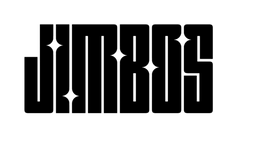Paint Correction Process – A Beginner’s Guide to Removing Swirls & Scratches the Right Way
If you're just getting started with paint correction, it's easy to feel overwhelmed. But the truth is, with the right process and products, anyone can safely remove swirls and scratches and restore a deep, clean shine to their vehicle’s paint.
In this guide, we’ll break down what paint correction actually is, why it matters, and how to do it the right way without risking your paint. Whether you’re just starting or looking to improve your results, this step-by-step walkthrough is designed to help you cut safely, polish properly, and finish strong—using pro techniques that are beginner-friendly.
What Is Paint Correction?
Paint correction is the process of removing surface defects from your vehicle’s clear coat—things like swirl marks, oxidation, light scratches, or water spot etching. These defects make paint look dull or hazy, even on new vehicles. Paint correction restores clarity and depth by leveling the surface with a machine polisher and an abrasive polish.
When Should You Correct Paint?
Only when it’s needed. Unlike waxing or ceramic coating, paint correction removes clear coat. So it’s not something you want to do routinely. Here are signs it’s time:
- Your paint has visible swirl marks or fine scratches
- The finish looks dull or cloudy, especially in direct sunlight
- You’ve just purchased a used vehicle or removed a wrap/PPF
Tools & Products Needed
Here’s a simplified kit that delivers professional results without overcomplicating things:
- Picture Perfect Polish (One-Step Polish & Compound) – Buy on Jimbo’s Detailing or Buy on Amazon
- Cut & Finish Pad – Buy on Jimbo’s Detailing or Buy on Amazon
- Finishing Pad – Buy on Jimbo’s Detailing or Buy on Amazon
- Softer Than Soft Microfiber Towels – Buy on Jimbo’s Detailing or Buy on Amazon
How to Perform a Basic Paint Correction
- Wash and Decontaminate – Use The Super Soaper and clay to start with a clean surface.
- Inspect the Paint – Use a light to spot swirls, scratches, or oxidized areas.
- Apply Picture Perfect Polish – Start with the Cut & Finish Pad for moderate correction. Switch to a finishing pad for refining.
- Work in Small Sections – Apply 4 pea-sized dots and make overlapping passes (medium pressure, speed 4–5).
- Wipe Off Residue – Use your Softer Than Soft Microfiber towel for a streak-free, swirl-free result.
Video Walkthrough – See It In Action
Pro Tips for Better Results
- Do a test spot before committing to the whole panel.
- Use tape to mask off trim or rubber to prevent staining.
- Let the machine and polish do the work—don’t push too hard.
- Inspect often and don’t chase perfection unless needed.
Should You Ceramic Coat After?
Absolutely. Once the paint is corrected, you want to lock it in. Apply a ceramic spray like Tough As Shell or the wipe-on pro-grade Gloss Boss to protect and enhance the finish.
Ready to Start Paint Correction?
If you're just getting started, the Picture Perfect Paint Bundle has everything you need to cut, polish, and finish like a pro.
Buy on Jimbo’s Detailing Buy on AmazonFAQs
Is paint correction safe for daily drivers?
Yes, as long as you're not doing it too often. Use a one-step polish like Picture Perfect and preserve your clear coat.
Do I need a dual-action polisher?
For best results, yes. It’s safer than rotary machines and easier for beginners to control.
Will it remove deep scratches?
No. If you can catch the scratch with your fingernail, it’s too deep for polish alone. Touch-up paint or a body shop may be needed.



